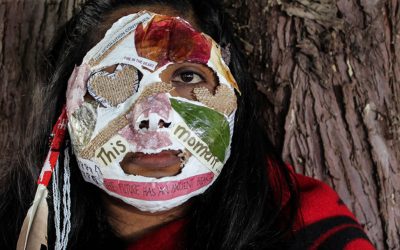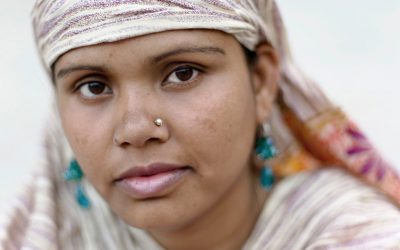A Change of Space: How COVID-19 Affects Personal Space
Photo by Ben Garratt
By Rick Budhwa
In a pre-pandemic North America, someone butting in line at the bank might stir up some deep annoyance: can you believe that guy? After all, the space in front of us was a buffer zone, not an invitation for someone to just stand there.
Our expectations around personal space are woven into our cultural fabric. Being born and raised in one cultural context means that these unwritten rules are second-nature and easy to navigate — we might not even think about them. That means that everything from how we stagger ourselves on public transit, to the way we either speed up or slow down on a sidewalk if we’re matching a stranger’s pace are fairly automatic actions.
Generally, there are two good ways of becoming aware of these unspoken cultural norms: the first is to break them and the second is to travel into a different cultural context. COVID-19 presents us with a third way of cultivating awareness: being given guidelines that challenge our norms and expectations.
Globally, this adaptation is a seismic change.
Depending on where someone lives in the U.S. and Canada, there are some differences to how much space we’re accustomed to having around us. But, largely, in the individualist North American society, the free space before us is space we feel entitled to. It’s not just that we feel frustrated when these norms are broken. Sometimes we might feel downright uncomfortable. Take, for instance, the expectations involved in riding an elevator. The second person to enter the elevator is expected to order themselves at the opposite corner from the first passenger. If they were instead to settle themselves within whispering distance beside the first person, that first person would likely feel fairly uncomfortable. The simple act of standing closer than expected could give the first passenger lasting anxiety about taking an elevator, it could elicit a complaint, and even incite violence.
But in another cultural context, this action would barely be noticed. I have been privileged to travel internationally, and one of my favourite things is to notice how those in other countries navigate personal space. Instead of North America’s orderly queues and the expectation that being third in line means being the third person served, Southeast Asia, for instance, sees masses of people who take priority based on a variety of factors.
The differences with personal space are even observed while driving. In the Dominican Republic, an expat told me that, while driving in the cities of the interior, it would be important not to stop at red lights and signs. I thought this was ludicrous, so of course I yielded to the first red light in the first city. No one else stopped. Immediately, the space in front of me filled with other vehicles, with scooters and motorcycles — the space in front of me was not my own free space or my buffer zone. It was available space for other vehicles. Once I had yielded, it became difficult to start back up again. I learned that if you just keep moving, the space is negotiated differently. In this cultural context, it was unhelpful to feel entitled to more space than my person and my vehicle physically needed.
So, what happens when a global pandemic strikes and demands an increase in personal space in the name of health and safety? You can’t just flip a switch and expect cultural norms to change.
This is a predicament many government officials have been grappling with. In Jakarta, Indonesia, the regulations to wear face masks go against all cultural precedents, and the enforcement of new rules is becoming increasingly unusual: cleaning sewers, pulling weeds, running 800 metres in the sun, and digging graves are just some of the punishments the government has devised in an attempt to enforce habits that don’t make up the country’s cultural fabric.
In a North American context, we are perhaps better suited to some of these changes. Physical distancing, for instance, may be easier with our fairly ordered approach to lineups and shopping. Stickers and signs reinforce the two-metre minimum distances, and perhaps further entrench our entitlement to more space. In rural areas, it’s possible that these new guidelines barely affect some people’s day-to-day lives. If people live on an acreage and only come into their small communities for necessities with a lifestyle that has never included large public gatherings, the refrain that demands two-metres of space is easy to fold into the rhythms of their lives.
But in most major North American cities, adhering to the two-metre rule becomes impossible at times. Inspired by a café in Germany, Americans from Lifehacker tested the realities of keeping two-metres apart by affixing pool noodles to a bike helmet and going about their days, and found it wasn’t always feasible to maintain the recommended distance. Our cities — buildings, transportation, sidewalks — are not engineered for this distance, even if our culture favours plenty of personal space. Infrastructure is so tied to concepts of subsistence that trying to retrofit our amenities has devastating consequences on a variety of businesses. In the case of restaurants, for instance, everything from hours, to staff, to menu options is tied to seating capacity. Reducing that capacity from 25 to 50 per cent bears consequences for all aspects of that business.
Globally, this adaptation is a seismic change. Densely populated areas will struggle the most with this shift, and the correlation between space and affluence is a factor that affects much of the world. From the super-wealthy who have the ability to abscond to private islands in perfect seclusion, to the crowded refugee camps that host exponentially more people than anyone with a private jet. Far from an equalizer, the pandemic once again reflects how poverty can exacerbate access to space, medical care, and resources that could benefit mental health during these times.
So, what happens when a global pandemic strikes and demands an increase in personal space in the name of health and safety? You can’t just flip a switch and expect cultural norms to change.
Yet there have been sweeping changes for people across socio-cultural backgrounds when it comes to a foundational component of global culture: funerary rites. While customs around funerals and burials differ from culture to culture, one commonality is the importance of coming together to grieve. The coronavirus has forced people around the world to deal with death in isolation, or to hold modified funerals which only allow limited numbers of people — and intermittent spritzes of disinfectant.
Considerations around mental health are also important during a time when isolation is on the rise. Physical distancing has also meant a halt to forms of personal greetings. This too is deeply embedded in culture. People want to do what they used to do — there’s an awkward flinch towards a hug or a handshake, yet now more calculations need to be made: what are these person’s beliefs, what is their lifestyle, are they elderly or immuno-compromised and do I trust them?
Social greetings that involve touch serve a purpose: they help us bond by releasing hormones such as oxytocin, which can even reduce stress and aggression. It’s speculated that handshakes came from a ritual which allowed people to prove they weren’t carrying weapons. It has therefore come to symbolize trust and good-faith interactions. Some say that COVID-19 has killed this social practice and are wondering what might replace it.
It isn’t the first time the potential benefits of a social greeting were outweighed by more pressing social issues, even in the recent past. During the MeToo movement — which saw a collective reckoning with sexual harassment and assault against women — hugs in the workplace have more often been sidelined to avoid discomfort and to signal respect. It remains to be seen whether these changes will endure. During the pandemic in 1918, recommendations for physical distancing slowed the spread of the Spanish Flu, yet over 100 years later, these same guidelines are proving difficult to follow.
Whether or not this change of space can take hold and endure, the COVID-19 pandemic has the ability to show us our cultural norms and expectations around personal space. Nowadays, in a scenario where we might be the second person on an elevator, instead of standing in the opposite corner, many of us will just take the stairs.
Rick Budhwa is the publisher of Culturally Modified and an applied anthropologist who has worked within the realm of cultural resources for nearly 25 years. Rick attended the University of Western Ontario where he received his BA in anthropology. Later, he completed a post-baccalaureate diploma in archaeology and master’s degree in anthropology/First Nations studies/archaeology at Simon Fraser University. He currently teaches Anthropology and First Nations Studies at Coast Mountain College and is the principal of Crossroads Cultural Resource Management. Rick has been formally adopted into the Gitdumden Clan of the Wet'suwet'en in the traditional territories where he lives with his wife and two boys.



